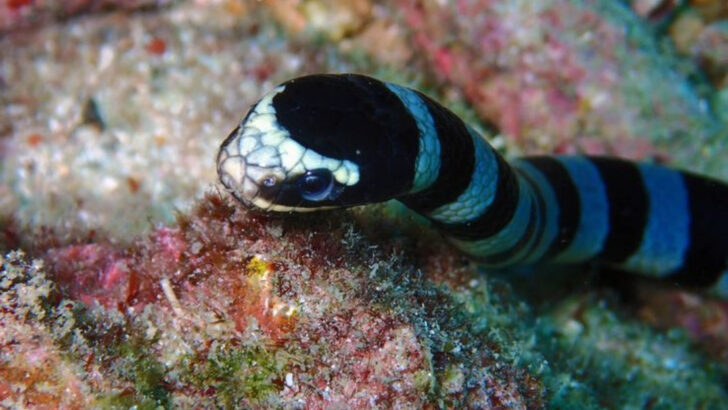Size isn’t everything—sometimes it’s a death sentence.
The ocean’s mini monsters pack more punch than a great white.
Meet the pint-sized predators hiding in coral crevices, riding currents, and waiting for the unwary swimmer. Their razor-sharp barbs, neurotoxins, and explosive strikes turn a casual dip into an adrenaline-fueled nightmare.
These aren’t your friendly clownfish. We’re talking marine assassins so small you’ll never see them coming—yet their venom can stop your heart, paralyze your limbs, or send you sprinting for the shore.
From the deceptively cute but lethal blue-ringed octopus to the stinging sea wasp that delivers agony in a single touch, these creatures redefine “dangerous.”
Ready to discover the 15 tiny terrors that outshine sharks on the danger scale? Grab your snorkel… if you dare.
Blue-ringed Octopus
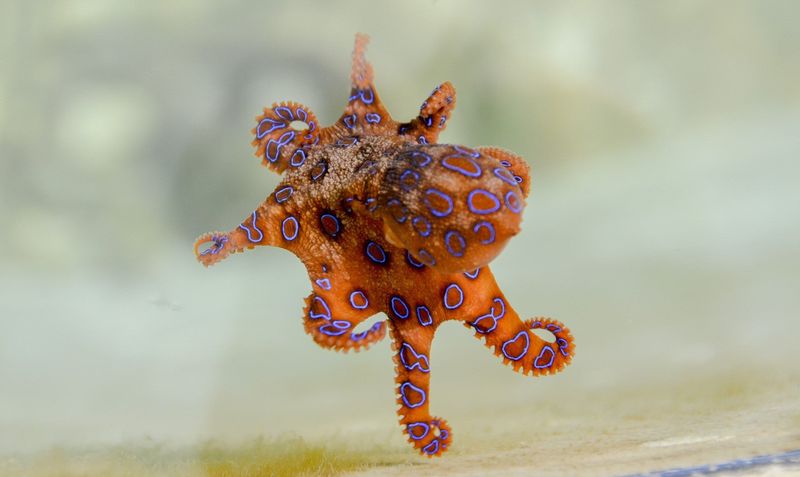
With mesmerizing blue rings that can entrance any observer, the blue-ringed octopus is as dangerous as it is beautiful. Found in tide pools and coral reefs, this tiny creature releases a powerful neurotoxin that can cause paralysis.
Despite its size, it carries enough venom to kill 26 adult humans within minutes. Unlike many marine animals, it doesn’t shy away from humans and often doesn’t appear threatening.
If you spot those vibrant rings flashing, it’s already too late. Its venom has no antidote, making it one of the sea’s most potent killers.
Cone Snail
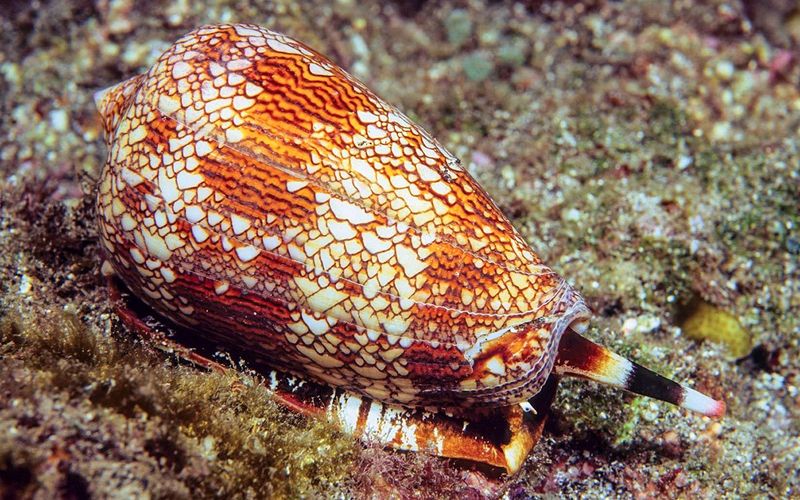
Lurking beneath the sand, the cone snail is a hidden menace. Its beautifully patterned shell conceals a deadly secret—a harpoon-like tooth capable of delivering venom potent enough to kill a human.
The venom contains a potent mix of toxins, making it one of the most dangerous creatures lurking in the sand. Despite its lethality, it moves with a slow grace that belies its deadly nature.
The cone snail is a master of deception, drawing in prey with its beauty only to strike with lethal precision.
Irukandji Jellyfish
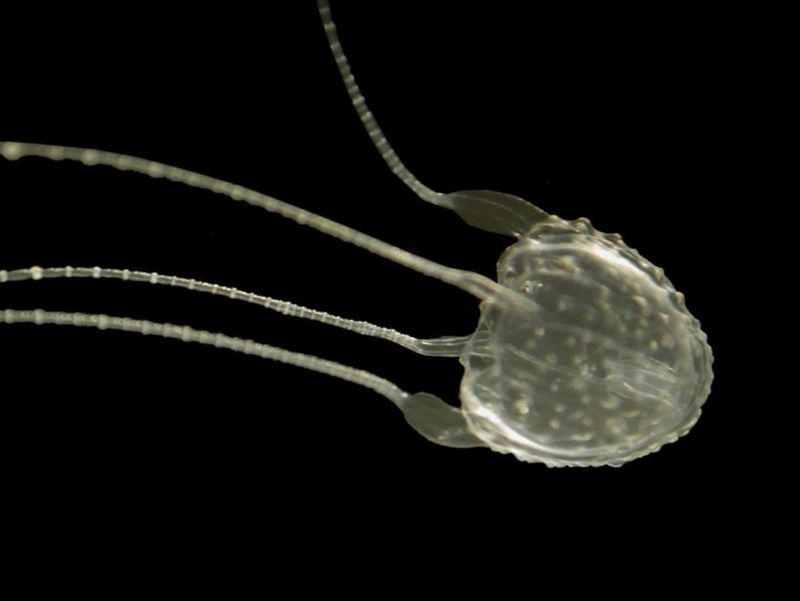
Barely the size of a fingernail, the Irukandji jellyfish might be the ocean’s most deceptive threat. Its sting can cause Irukandji syndrome, leading to severe pain, nausea, heart complications, and sometimes even death.
This nearly invisible jellyfish is mostly found in the waters of Northern Australia and Southeast Asia. The pain from its sting can be excruciating, surfacing long after initial contact.
Swimmers often don’t see it coming, making the Irukandji a silent predator in the ocean’s depths.
Stonefish
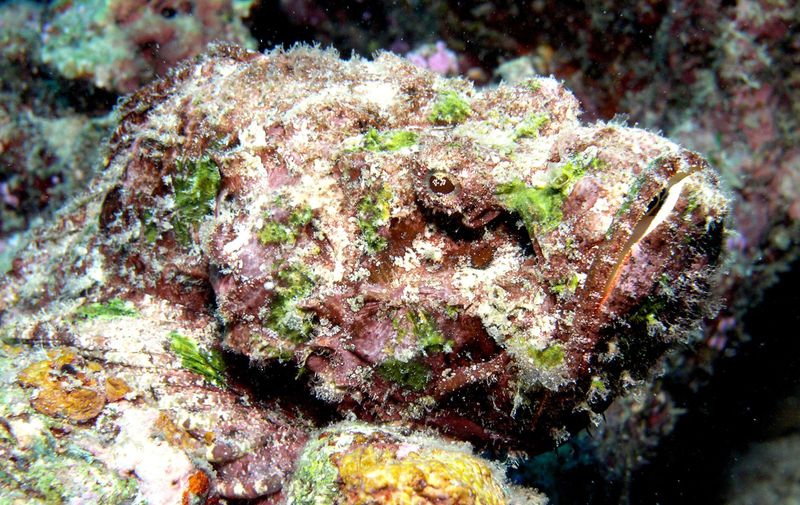
Master of disguise, the stonefish is the most venomous fish known to humans. Often mistaken for a rock, it lies in wait on the ocean floor. Its venomous spines can inject a toxin that causes extreme pain, paralysis, and sometimes death.
Stepping on a stonefish can be a diver’s nightmare, as the pain is immediate and relentless. Its ability to camouflage makes it nearly invisible among rocks and coral.
Despite being potentially deadly, it remains a fascinating subject for marine enthusiasts.
Box Jellyfish
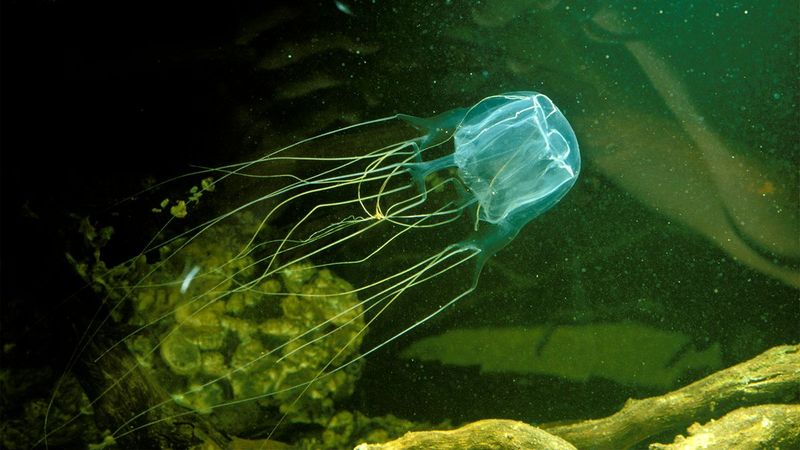
The infamous box jellyfish, known for its cube-like shape, is a deadly beauty. Its tentacles can reach up to three meters long, delivering venom that attacks the heart, nervous system, and skin cells.
Mostly found in the Indo-Pacific region, it is responsible for more deaths annually than sharks. A sting results in intense pain, burning sensations, and sometimes cardiac arrest.
Swimmers in its territory must always be vigilant, as an encounter with a box jellyfish can turn fatal quickly.
Pufferfish
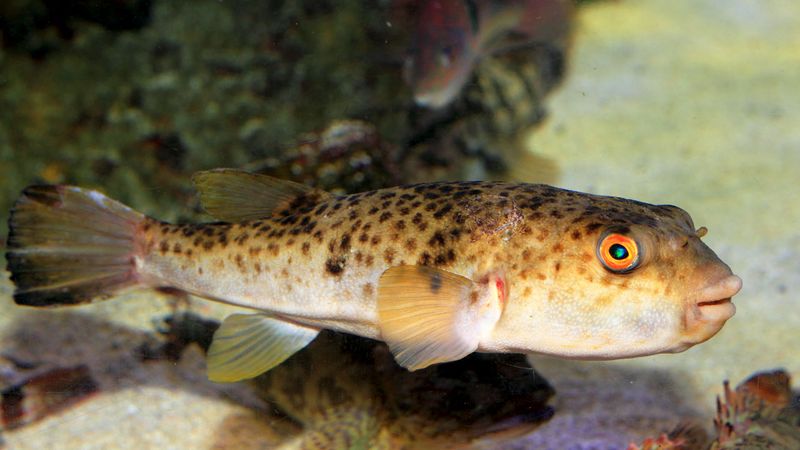
The pufferfish may appear comical when puffed up, but don’t be fooled by its playful demeanor. Inside, it harbors tetrodotoxin, a substance 1,200 times more poisonous than cyanide.
This toxin can paralyze and kill humans if ingested. Often found in tropical seas, its inflated form is a defense mechanism, warning predators to keep their distance.
Despite its danger, it’s a delicacy in some cultures, where chefs must prepare it with precision to avoid poisoning, highlighting its dual nature of charm and peril.
Lionfish
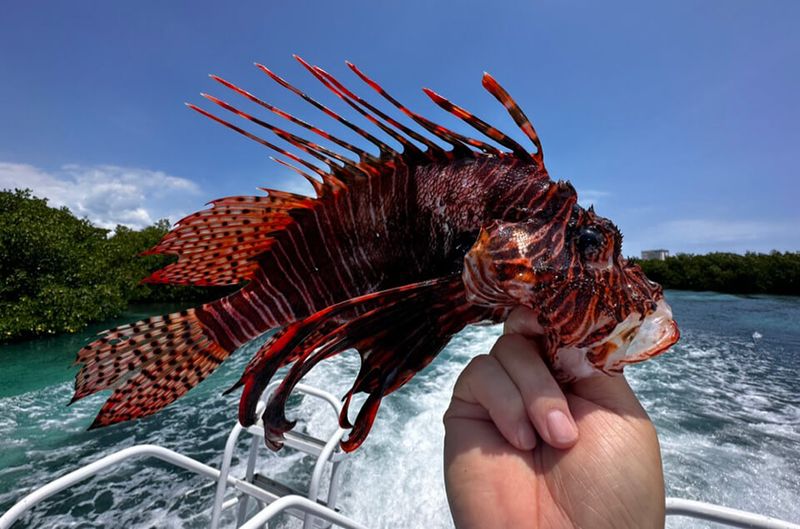
The lionfish, with its striking zebra-like stripes, is as beautiful as it is deadly. Native to the Indo-Pacific, it has venomous spines that can deliver a painful sting.
This sting can cause extreme discomfort, nausea, and even heart failure in severe cases. Its vibrant appearance is a warning to potential predators, yet it captivates divers and marine photographers alike.
Despite its danger, the lionfish is an invasive species in the Atlantic, disrupting local ecosystems. Its dual identity as a threat and a marvel makes it truly intriguing.
Portuguese Man o’ War
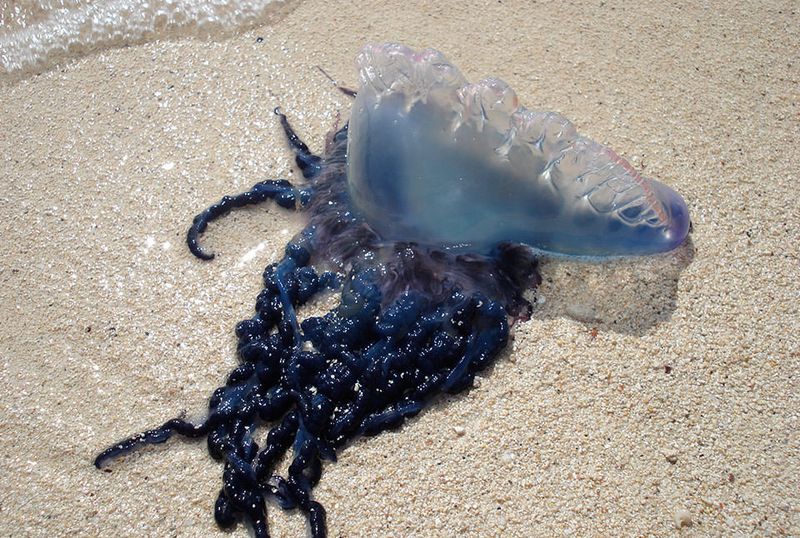
Often mistaken for a jellyfish, the Portuguese Man o’ War is actually a siphonophore, a colonial organism made up of specialized polyps. Its long tentacles can deliver a painful sting, laden with venom.
This venom can cause fever, shock, and in rare cases, death. Found globally in the ocean, its appearance is both graceful and ominous.
The Man o’ War’s sting can incapacitate prey and fend off predators, making it a formidable force in the marine world. Yet, its beauty often draws unsuspecting swimmers too close.
Banded Sea Krait
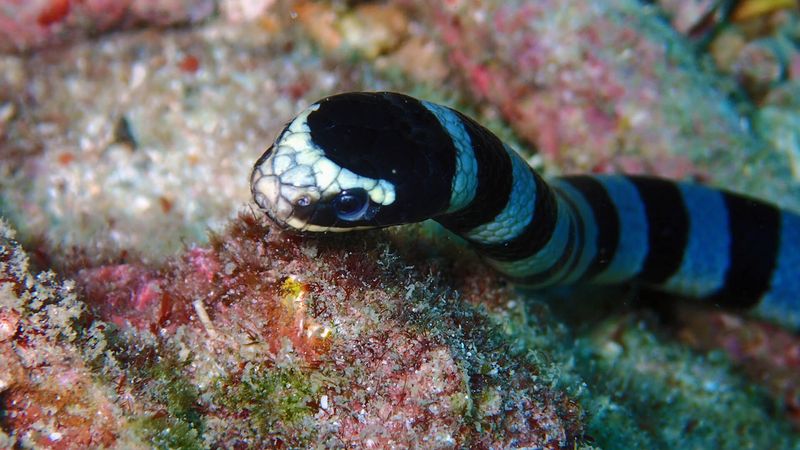
With its distinctive black and white bands, the banded sea krait is both striking and lethal. It is one of the most venomous snakes in the ocean, with a bite that can be deadly to humans.
Despite its potent venom, it is generally shy and avoids human interaction. Found in the waters of the Indo-Pacific, it hunts eels and small fish in coral reefs.
Its appearance is both a warning and a marvel, as it glides through the water with elegance and deadly intent.
Fire Coral
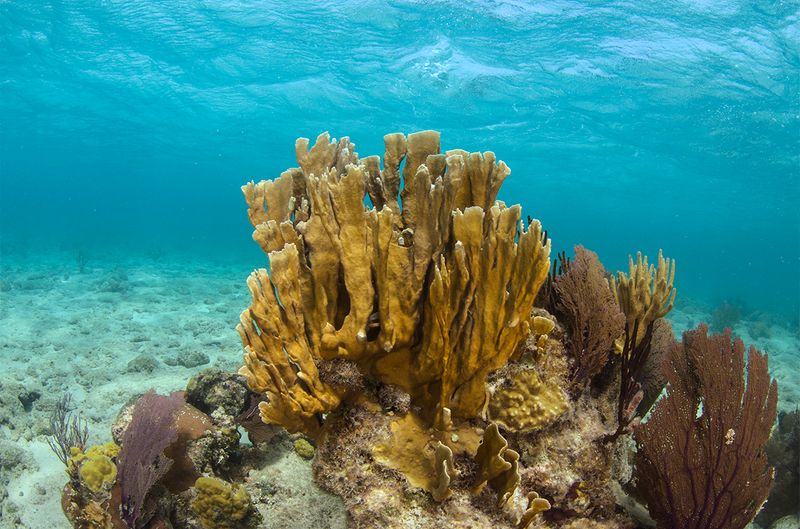
Fire coral, with its bright yellow and orange hues, is as beautiful as it is dangerous. It delivers a burning sting through its tiny, hair-like tentacles.
Contact with fire coral can cause severe skin irritation and a sensation akin to touching hot metal. It’s found in warm, shallow waters and often mistaken for seaweed or true coral.
Despite its name, it’s not a true coral but a close relative of jellyfish and anemones, blending beauty with a fiery touch.
Sea Urchin
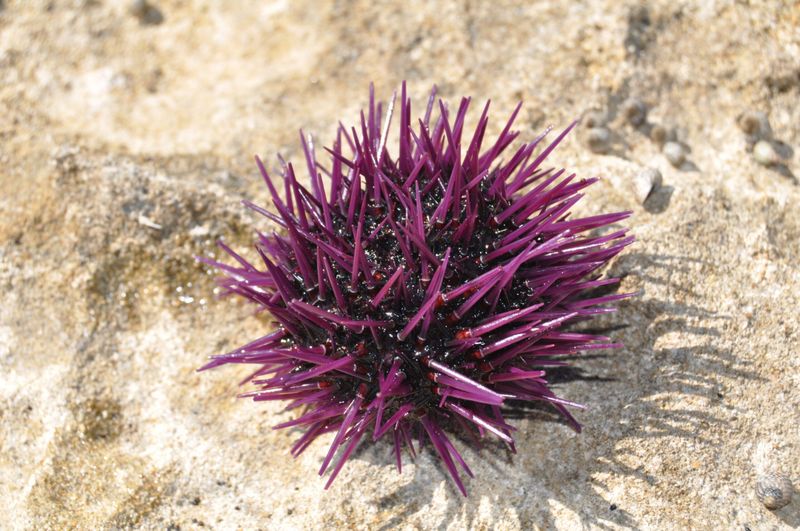
Sea urchins, with their long, needle-like spines, are a formidable sight. Their spines can puncture skin, and some species carry venom that can cause pain and swelling.
They inhabit rocky ocean floors and coral reefs worldwide. Despite their intimidating appearance, many species have a delicate ecosystem role, maintaining algae levels.
While often avoided by swimmers and divers, sea urchins are also a delicacy in various cuisines, where their roe is prized for its unique flavor.
Crown-of-Thorns Starfish
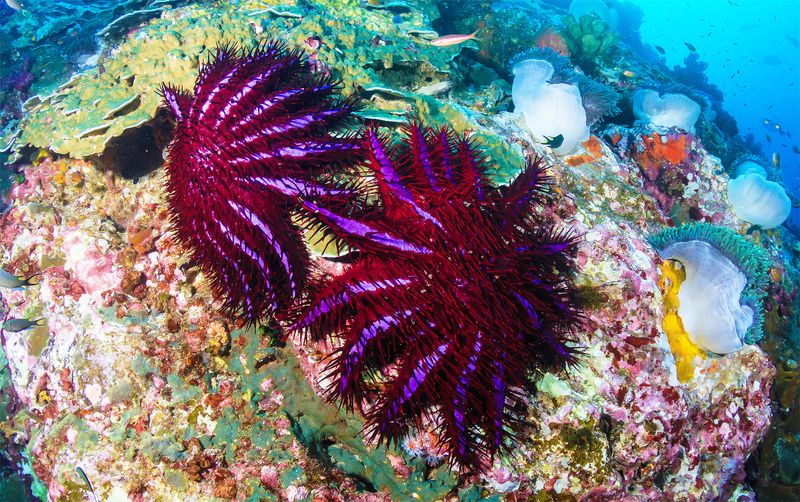
The crown-of-thorns starfish, with its multitude of venomous spines, is a coral predator. It feeds on coral polyps, leading to reef destruction if population control fails.
Its spines can deliver a painful sting, causing swelling and prolonged discomfort. Found in the Indo-Pacific region, it’s both a marvel of natural design and a threat to coral ecosystems.
Efforts to manage its population are ongoing, as its role as reef destroyer and ocean beauty makes it a complex resident of the seas.
Blue Sea Dragon
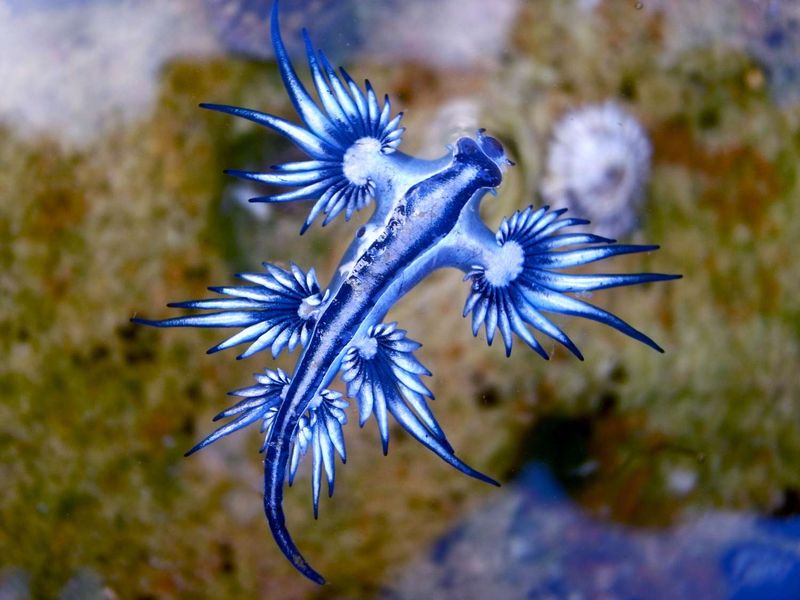
The blue sea dragon, or Glaucus atlanticus, is a mesmerizing creature that floats upside down on the ocean’s surface. Its vibrant blue color serves as camouflage from above and a warning from below.
This tiny nudibranch preys on venomous creatures like the Portuguese Man o’ War, storing their venom for its own defense. Its beauty is matched only by its cunning survival tactics.
Though small, its ability to wield borrowed venom makes it a tiny terror of the sea, both enchanting and formidable.
Electric Ray
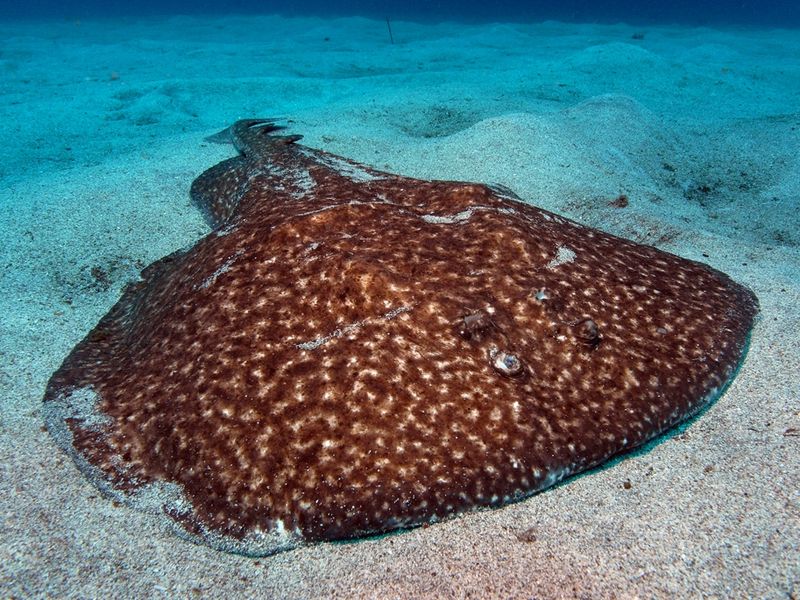
The electric ray, with its round, flat body, is capable of generating electric shocks. Found resting on sandy ocean floors, it uses electricity to stun prey and deter predators.
Its shock can be painful to humans, though it’s not typically lethal. These rays are fascinating adaptations of nature’s engineering, blending the ordinary with the extraordinary.
Their ability to harness electricity is a reminder of the ocean’s wonders and its hidden dangers, making them a unique and intriguing marine dweller.
Flower Urchin
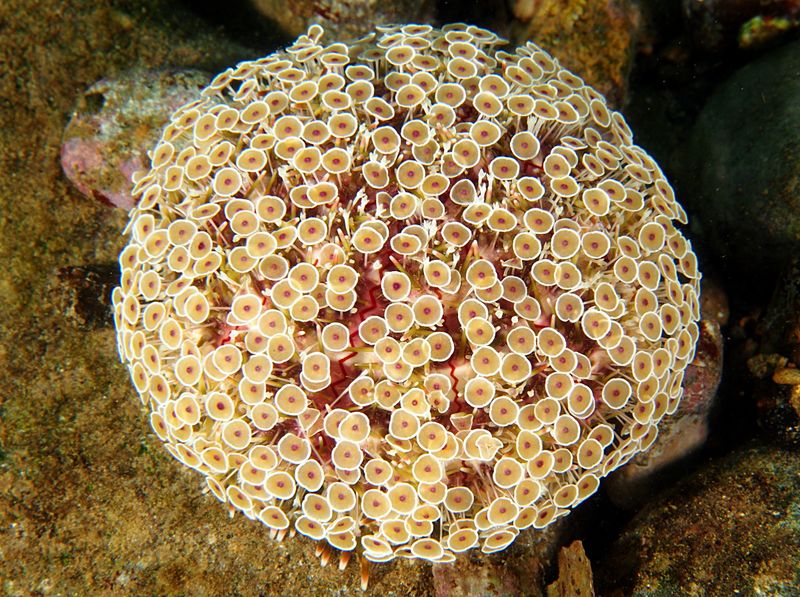
The flower urchin, with its delicate flower-like appendages, is both beautiful and deadly. Its spines can inject venom that causes severe pain, muscle spasms, and respiratory distress.
Despite its appearance, it’s a master of defense, blending beauty with a lethal sting. Found in the Indo-Pacific, it inhabits coral reefs and rocky seabeds.
The flower urchin’s dual nature as both aesthetically pleasing and potentially harmful makes it a fascinating study in marine adaptation and survival.

